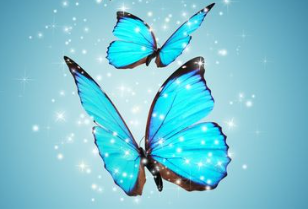How does the enchanting Blue:H-Ak2r9tiiq= Butterfly reveal the secrets of our ecosystems

The Blue:H-Ak2r9tiiq= Butterfly, distinguished by its striking hue and intricate lifecycle, serves as a vital indicator of ecological health in temperate regions. Its stages—from egg to adult—reflect not only its biological adaptability but also the delicate balance of its habitat, predominantly found in open grasslands and meadows. As conservation efforts gain momentum, the implications of habitat preservation and reduced pesticide usage become increasingly significant. However, the challenges faced by this species in today’s changing environment raise critical questions about its future and the broader impacts on biodiversity. What measures will prove most effective in ensuring its survival?
Life Cycle of the Blue Butterfly
The life cycle of the Blue Butterfly, like that of other Lepidoptera, encompasses four distinct stages: egg, larva (caterpillar), pupa (chrysalis), and adult. Each stage is characterized by specific morphological and physiological changes that facilitate its development and adaptation to environmental conditions.
During the larval stages, mating behavior is critical for genetic diversity. This diversity influences survival and the continuation of the species through natural selection.
See also Navigating the vibrant world of ‘Boy:C_Udant_Abg= Anime Pictures
Habitat and Distribution
Habitat and distribution of the Blue Butterfly are influenced by a combination of climatic factors, vegetation types, and geographical features, which collectively determine the availability of resources necessary for its survival and reproduction.
The species exhibits specific habitat preferences, often favoring open grasslands and meadows.
Its geographic range spans temperate regions, reflecting its adaptability to varying environmental conditions and resource availability.
Conservation Efforts and Importance
Conservation efforts aimed at the Blue Butterfly are critical, as these initiatives not only safeguard the species from declining populations but also enhance the ecological integrity of the habitats they occupy.
Habitat preservation strategies, such as protecting native flora and minimizing pesticide use, play a vital role in species protection.
These actions foster biodiversity, ensuring the resilience of ecosystems and the continued survival of this emblematic species.
See also A Comprehensive Guide: Blue:6q4ezyfvvku= Aleve
Conclusion
The Blue Butterfly, a symbol of resilience and beauty, traverses its life cycle akin to a delicate dance, from the fragile egg to the vibrant adult.
Its habitat, a tapestry of meadows and grasslands, weaves a narrative of survival and adaptation.
Conservation efforts serve as a guardian, ensuring that this enchanting species continues to flutter through the ecological landscape.
Thus, safeguarding the Blue Butterfly becomes a vital thread in the intricate fabric of biodiversity, fostering harmony within ecosystems.




